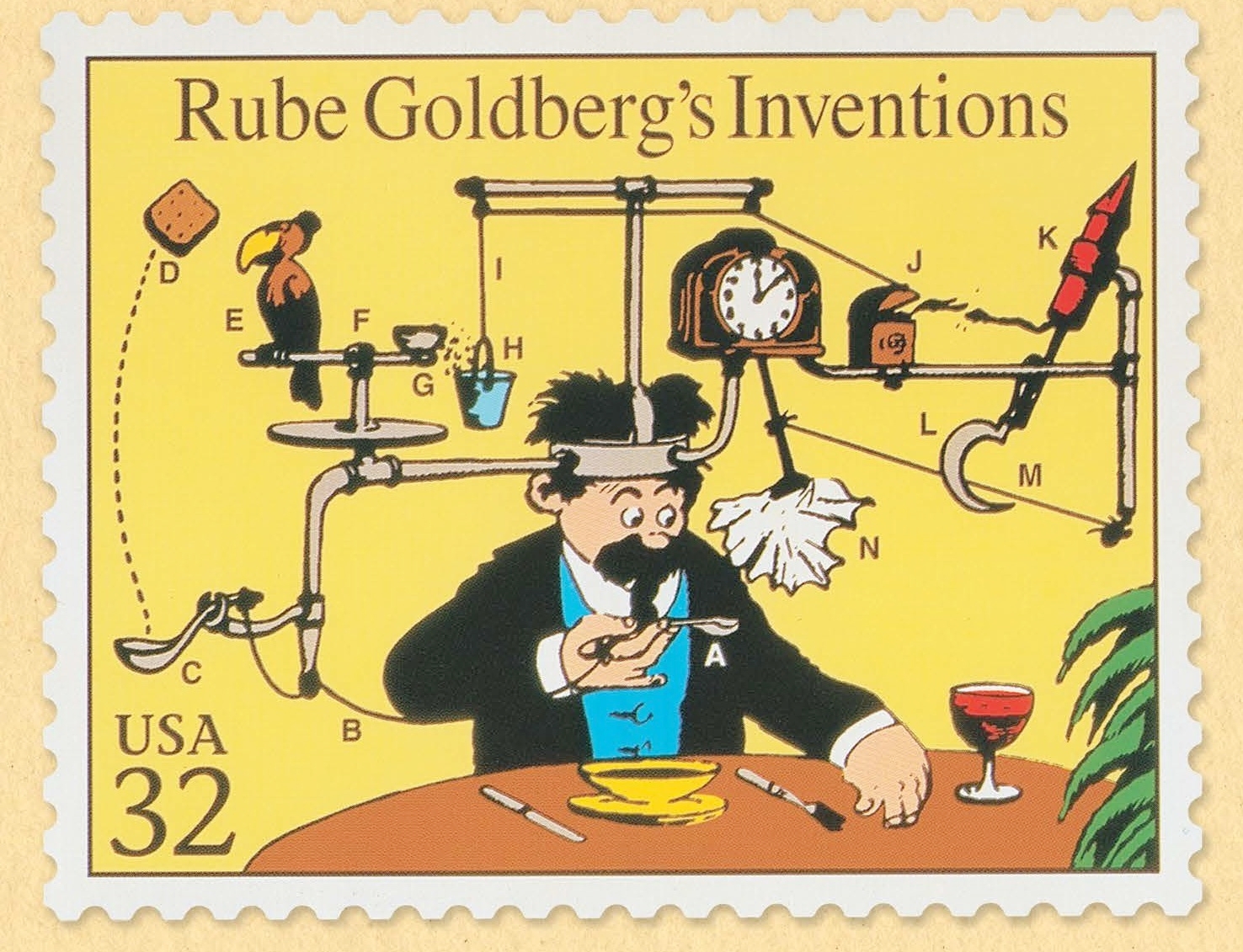Rube Goldberg is more than just a man — he’s also an adjective.
Defined in the Merriam-Webster Dictionary as “accomplishing by complex means what seemingly could be done simply,” the iconic American cartoonist and illustrator’s work — including his famous invention drawings — will be on display this month at the Grand Rapids Art Museum in its latest exhibit.
“We felt like Rube Goldberg was somebody whose name was probably familiar to a number of people but whose work wasn’t really,” said Ron Platt, the museum’s chief curator. “He was just one of those remarkable people who I think is underappreciated.”
The Art of Rube Goldberg — the first comprehensive survey exhibit in nearly 50 years demonstrating Goldberg’s talent — will take guests through his 72-year career with drawings, photographs, sketches and animated films. The GRAM is the second stop this year for the exhibit, which will be at select museums across the country through 2019.
Platt’s favorite part of the exhibit is the 16 invention drawings on display, which he said are the nut of the show. Describing those drawings as complex would be a huge understatement. Each drawing shows a series of chain-reaction machines designed to perform simple tasks.
One example is a self-operating napkin, which for some reason also throws a cracker at a parrot and sets off a rocket before doing the originally designed task. While the drawings show Goldberg’s artistic skills, the captions bring to life his deadpan sensibility.
“I think one of the overarching themes in his work is the idea that we sort of chase after new and novel technology,” Platt said. “I think it’s just more prescient than ever.”
Especially if you’re reading this from your iPhone.
Those invention drawings, and Goldberg’s work in general, have left a lasting legacy still felt today, including in the 30-minute film The Way Things Go. The museum will play the Peter Fischli and David Weiss video throughout the show’s run in the middle of the exhibit.
“It’s like a Rube Goldberg contraption kind of come to life in the studio,” Platt said.
The exhibit — which will have educational activities throughout its duration, including a lecture from the originating curator Creighton Michael — will also show guests the man behind the work.
“He’s sort of been condensed into this idea of a complicated contraption,“ Platt said. “We felt that it was a really neat opportunity to sort of investigate and present a much fuller picture of him.”
The exhibit does just that through rare personal photos and memorabilia from the Goldberg archives. Platt said he learned a lot about Goldberg, like how his father encouraged him to get a degree in engineering and how he worked for San Francisco’s Department of Water and Sewers before becoming a full-time cartoonist and illustrator.
The Pulitzer Prize-winning artist was BFFs with Charlie Chaplin and also wrote a screenplay that starred a few of the Three Stooges before they became Stooges. On top of that, he was a founding member and the first president of the National Cartoonists Society, which now has an award named after him. But that’s just the tip of the iceberg, with Goldberg creating an estimated 50,000 cartoons in his lifetime.
“I just love the idea that his sort of crazy imagination in part was driven by practical concerns,” Platt said. “I like to think his dad would have been ultimately proud.”





